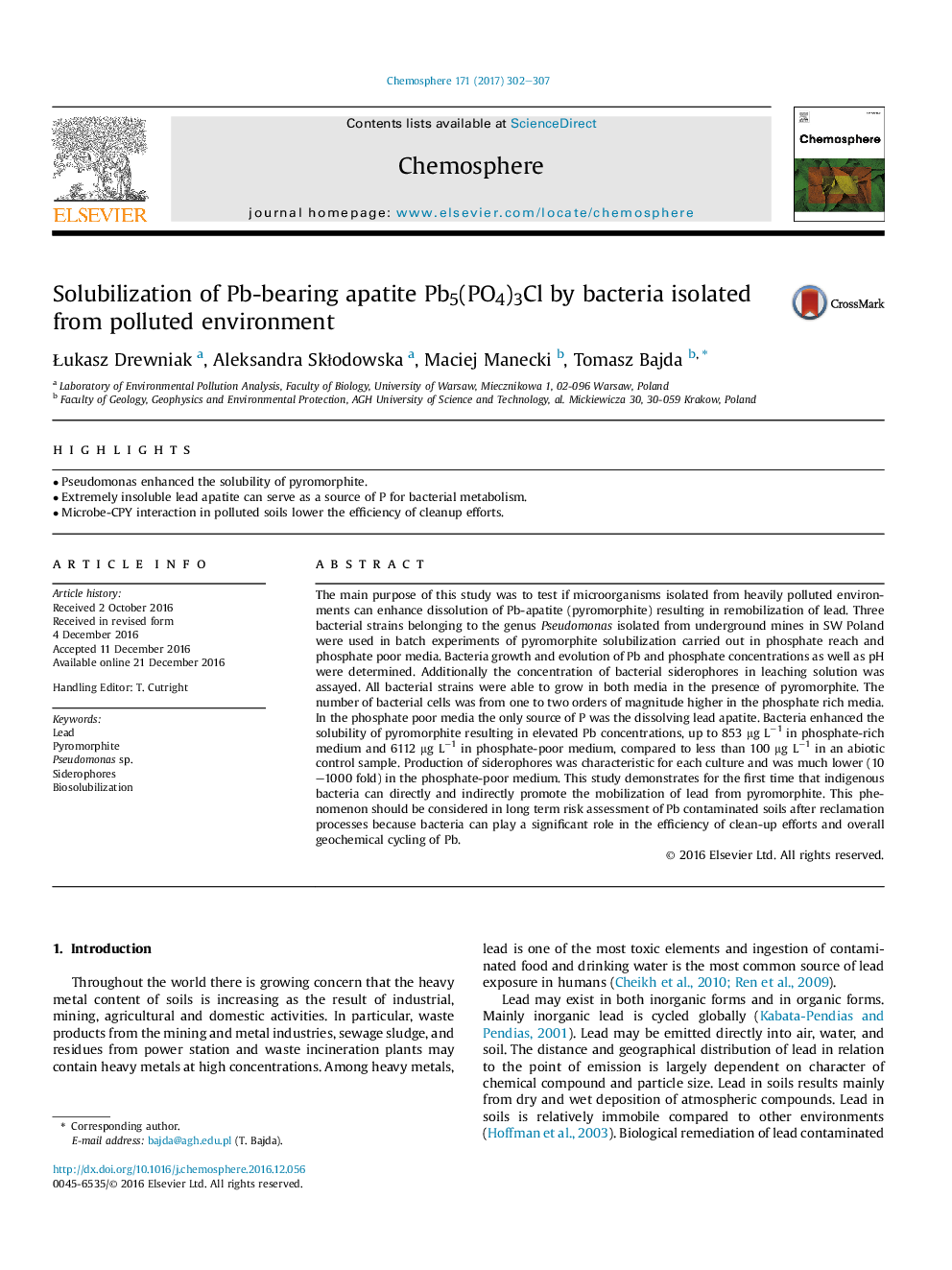| Article ID | Journal | Published Year | Pages | File Type |
|---|---|---|---|---|
| 5746389 | Chemosphere | 2017 | 6 Pages |
â¢Pseudomonas enhanced the solubility of pyromorphite.â¢Extremely insoluble lead apatite can serve as a source of P for bacterial metabolism.â¢Microbe-CPY interaction in polluted soils lower the efficiency of cleanup efforts.
The main purpose of this study was to test if microorganisms isolated from heavily polluted environments can enhance dissolution of Pb-apatite (pyromorphite) resulting in remobilization of lead. Three bacterial strains belonging to the genus Pseudomonas isolated from underground mines in SW Poland were used in batch experiments of pyromorphite solubilization carried out in phosphate reach and phosphate poor media. Bacteria growth and evolution of Pb and phosphate concentrations as well as pH were determined. Additionally the concentration of bacterial siderophores in leaching solution was assayed. All bacterial strains were able to grow in both media in the presence of pyromorphite. The number of bacterial cells was from one to two orders of magnitude higher in the phosphate rich media. In the phosphate poor media the only source of P was the dissolving lead apatite. Bacteria enhanced the solubility of pyromorphite resulting in elevated Pb concentrations, up to 853 μg Lâ1 in phosphate-rich medium and 6112 μg Lâ1 in phosphate-poor medium, compared to less than 100 μg Lâ1 in an abiotic control sample. Production of siderophores was characteristic for each culture and was much lower (10-1000 fold) in the phosphate-poor medium. This study demonstrates for the first time that indigenous bacteria can directly and indirectly promote the mobilization of lead from pyromorphite. This phenomenon should be considered in long term risk assessment of Pb contaminated soils after reclamation processes because bacteria can play a significant role in the efficiency of clean-up efforts and overall geochemical cycling of Pb.
